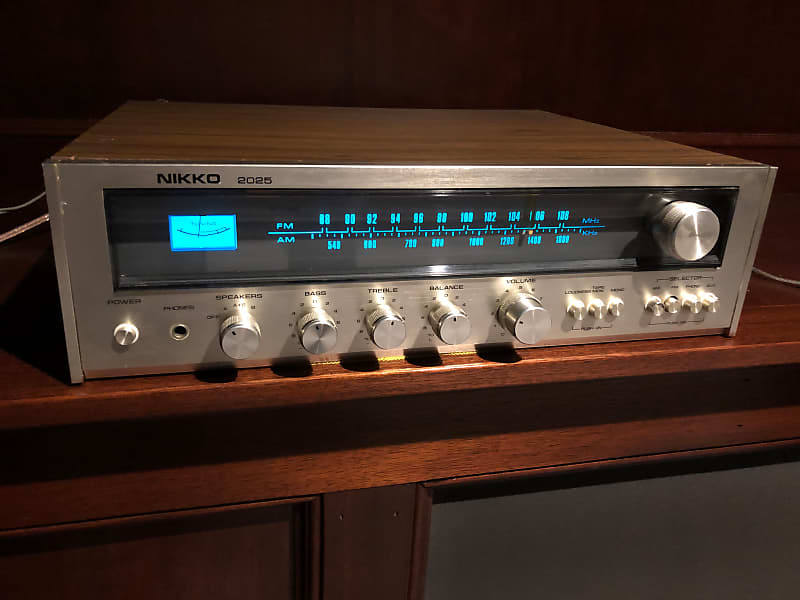
Image taken from reverb.com
I recently purchased a Nikko 2025 receiver from a fellow on Craigslist. The picture below is a stock photo, not my unit, since I forgot to take a nice picture of the one I purchased.

Image taken from
reverb.com
The receiver picks up FM and AM stations, producing a reasonable sound. I haven't tested the phono or aux inputs yet. One item that needs help is the lighting. The lights on the main dial don't turn on, leaving the unit dark and hard to read.
In this receiver, those front lights are cylindrical bulbs, connected to two parallel traces on a small circuit board. This is a view of the circuit board from the back; the bulbs are on the far side.
I've labelled the traces which control the lamps themselves: "lamp strip A" and "lamp strip B", which are connected to each side of the lamp bulbs. The two traces labelled "stereo A" and "stereo B" control the light behind the word "Stereo" on the dial, and the sliding dial indicator.

The problem is that none of the lamps lights up. I verified that there is electrical connectivity between the lamp strips A and B, so the problem is probably in the wires and/or connections which carry current to these strips.
Below are four additional closeup views of the board. The two lamp strips are connect to the GREEN WIRES attached to the board. Can you find any obvious problems with the connections between those wires and the board?
The receiver came together with a pair of Sony SS-310 speakers.
Cosmetically, they appear to be in pretty good shape. I can remove the back from each cabinet, which contains a yellow foam pad. After taking out the pad, one can see the drivers.
First, the woofer.
Next, the tweeter.
However, I can't figure out how to remove the grill in order to unconver the front surfaces of the drivers -- and find out of the woofers need re-foaming. The grill seems to be attached firmly to the cabinet, and I don't want to rip or damage it by pulling too hard. Take a second look at the interior; should I just try to loosen the screws around each driver and pull it out from the back?
I checked the interiors of the speakers. Each has a woofer and a tweeter, connected with a very simple crossover circuit: a single capacitor.

The capacitor is an Elna CE-BP(P) unit, purple in color and cylindrical in shape, with markings indicating its rating: 5.0V 2.2 uF. Since these capacitors very likely are original equipment, and therefore forty-ish years old, it's probably a good idea to replace them. Fortunately, that should be very easy.
I then examined the outside surfaces of the speaker cabinets. The tops had some scratches and wear.
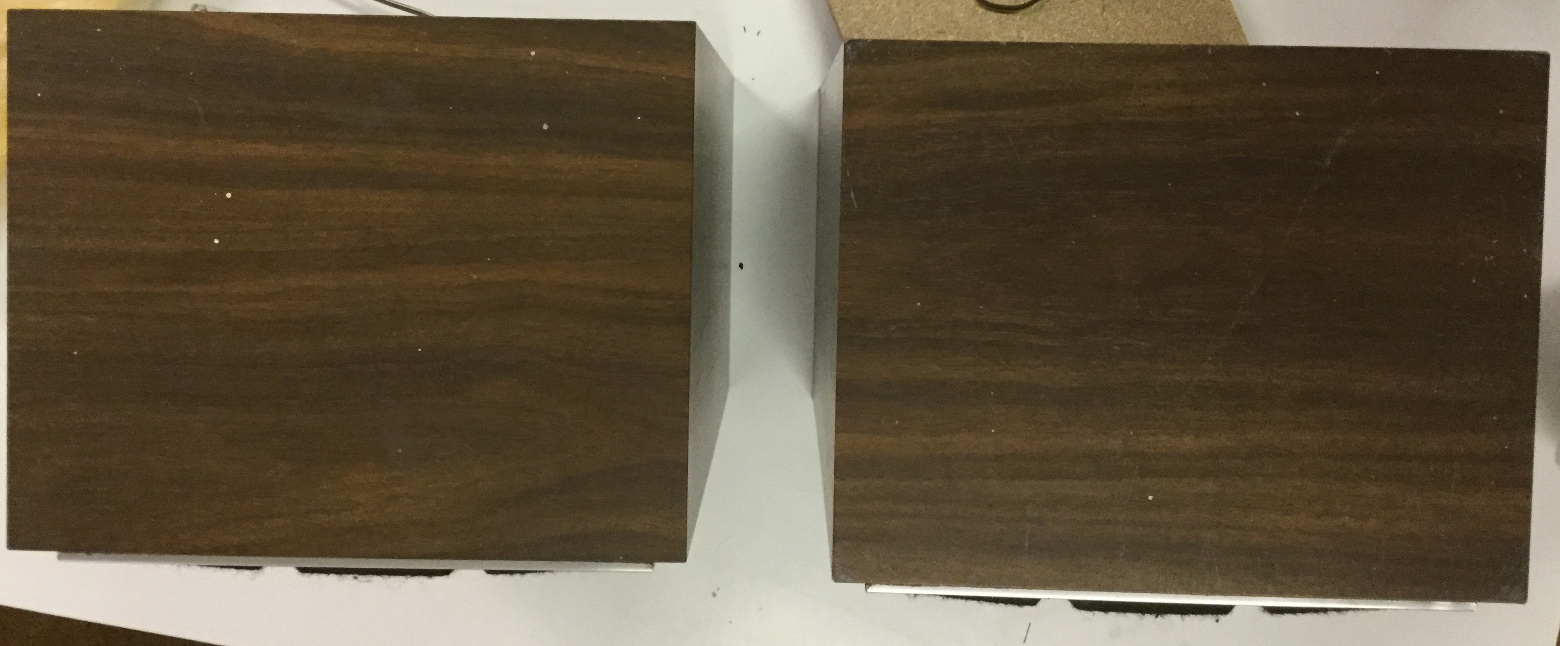
The sides looked cleaner.
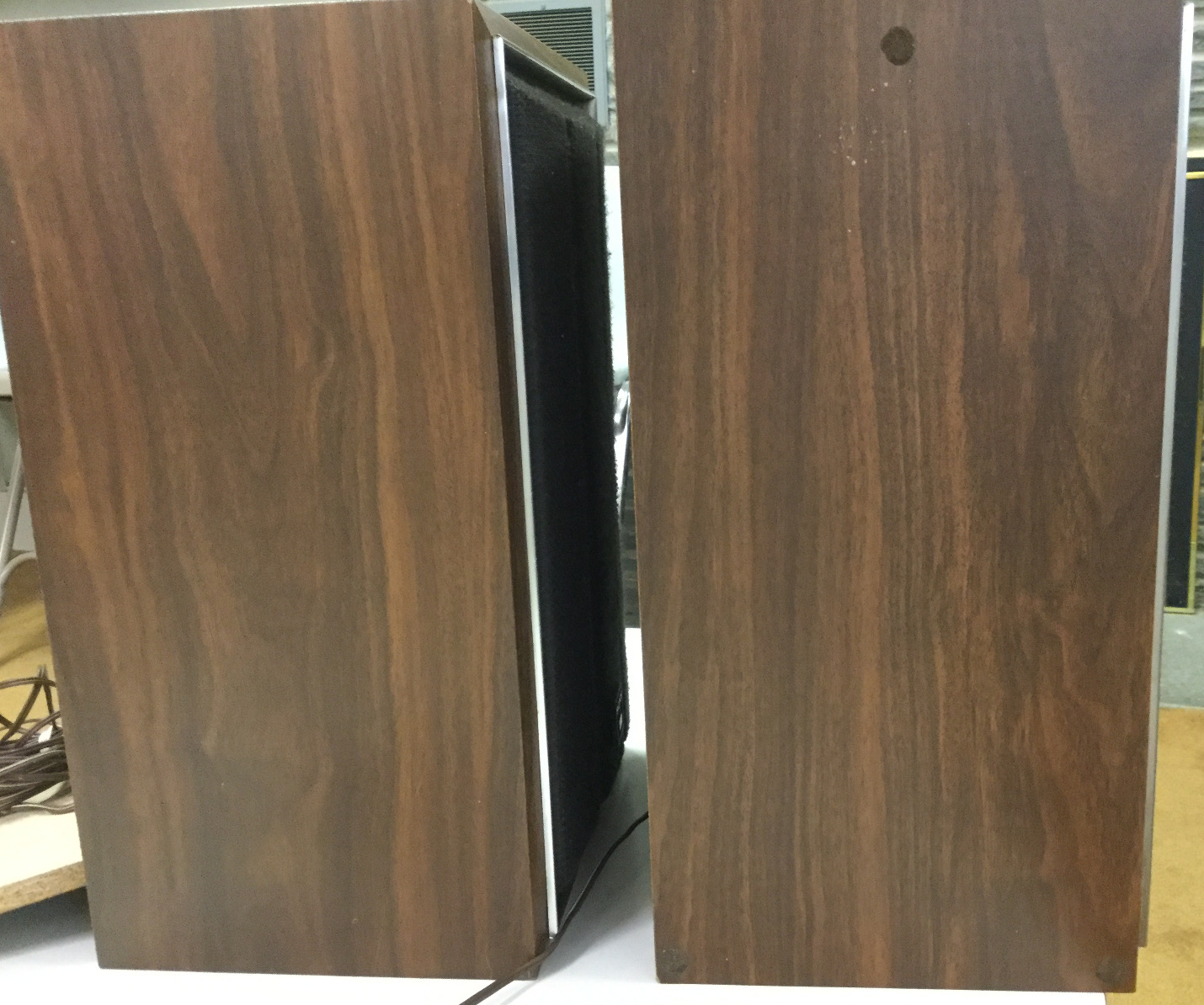
I started the process of very minor refinishing by rubbing the sides and tops with a pad of very fine steel wool, moistened with Howard's Restor-A-Finish. I'll continue with that process over the next week.
Meanwhile, let's look at the receiver. Here's a shot of the front.

The panel is in good shape. The knobs are a bit dirty, though.

I'd like to clean them. That would be easier if I could remove them from the receiver, but I'm not sure how to do that. Should I just pull hard, or must I disassemble the front panel and remove some set screws?
I then examined the lamps on the front panel, which are not lighting up when the receiver is turned on. The lamps appear to be of a common sort for vintage 1970s equipment: cylindrical "fuse" lamps, possibly of a type taking 8 V and 0.25 A.
I did the following:
So the lamps are apparently powered by AC, not DC. Interesting. Why aren't they lighting up? Are they all burned out?
I've addressed the main issues with the Nikko 2025 and the Sony SS-310 speakers. Here's what I did.
First, I removed the old lamps. I tested each one and found that all had failed.
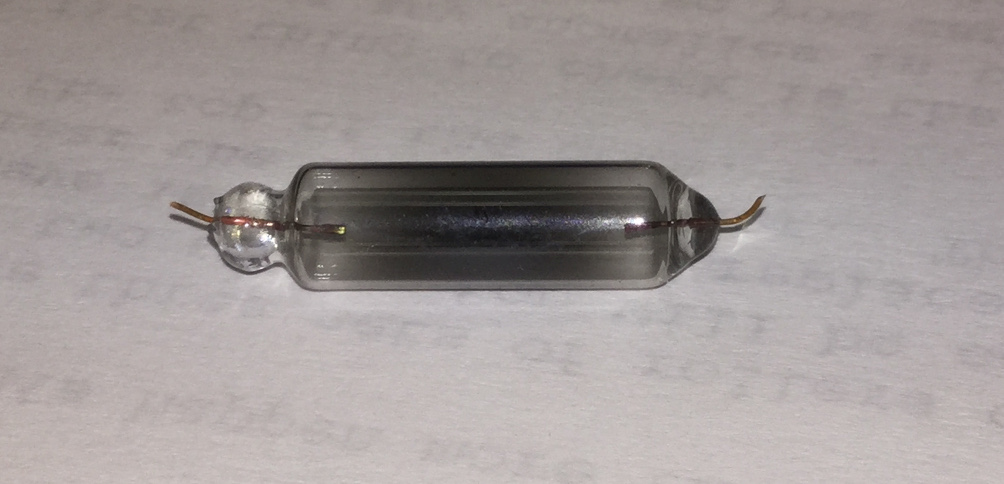
I ordered a set of new lamps from Dave at dgwojo.com and soldered them into place. Space was tight, but I managed to move the lamp-holding unit back far enough to allow me to do the job without having to remove the whole unit. My soldering skills aren't great ...

.... but the new bulbs did all light up!
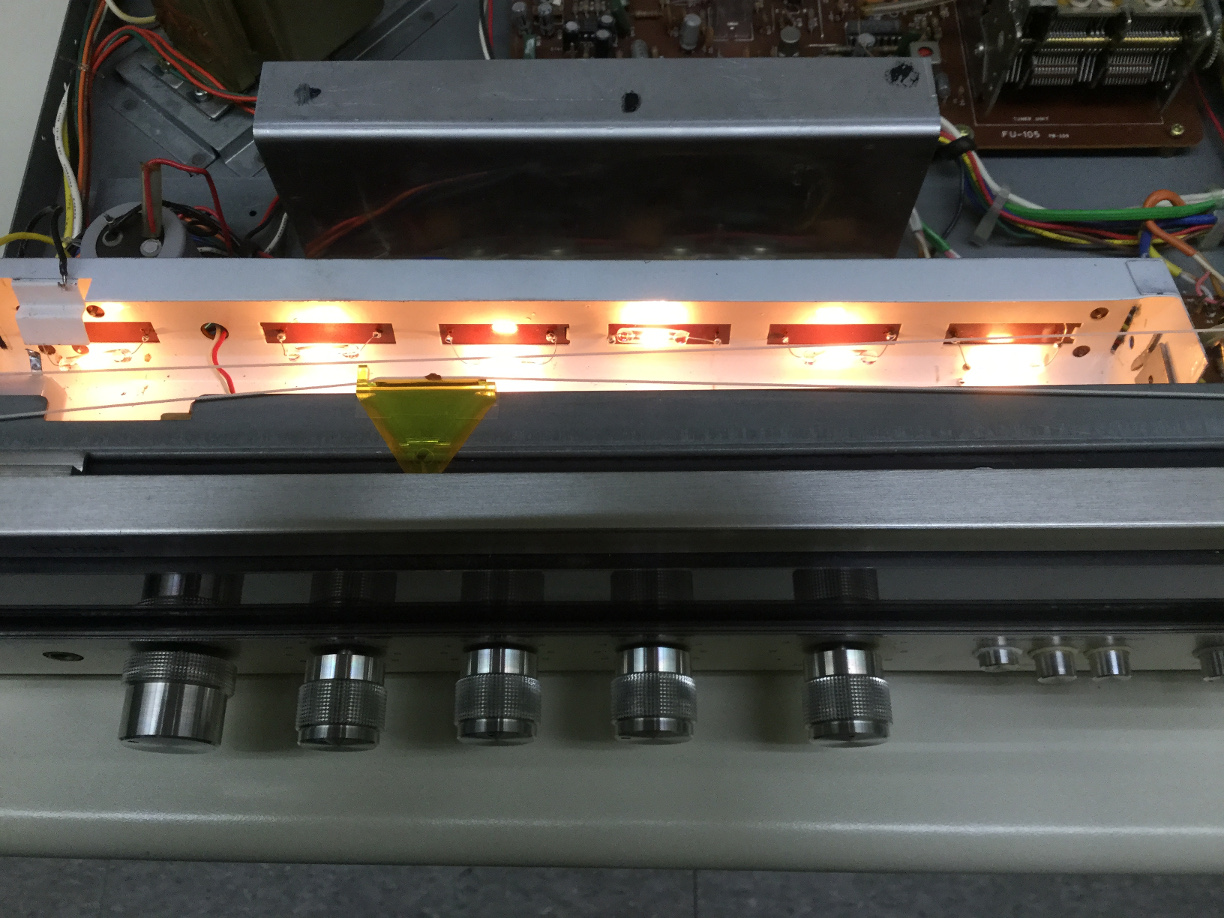
Now I can see the dial clearly in the dark. The signal-strength meter on the left is also lit up, and I verified that it tracks the actual signal strength. Good!
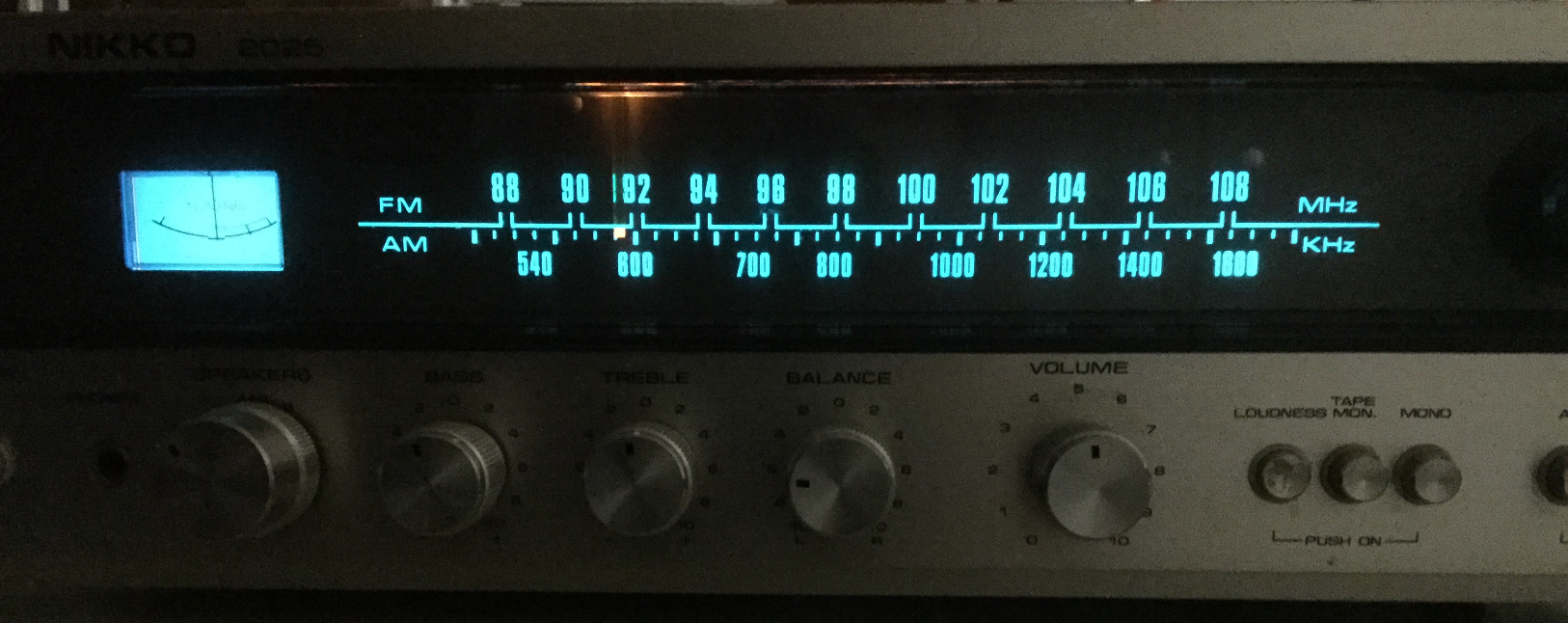
You may recall that the knobs were discolored ...

I soaked them in soapy water and tried scrubbing with an old toothbrush. That didn't seem to help much, so I created a paste from a bit of water and a pinch of "Barkeeper's Friend." Scrubbing the paste onto the knobs with the toothbrush did appear to remove some of the discoloration. The knobs now look brighter to me:

Over the course of a couple of weeks, I cleaned the top and sides of the speaker cabinets as follows:
The difference isn't dramatic, but the wood veneer now looks a bit nicer.
Inside the Sony SS-310 speakers is a very simple crossover, consisting of a single 2.2 micro-farad capacitor.
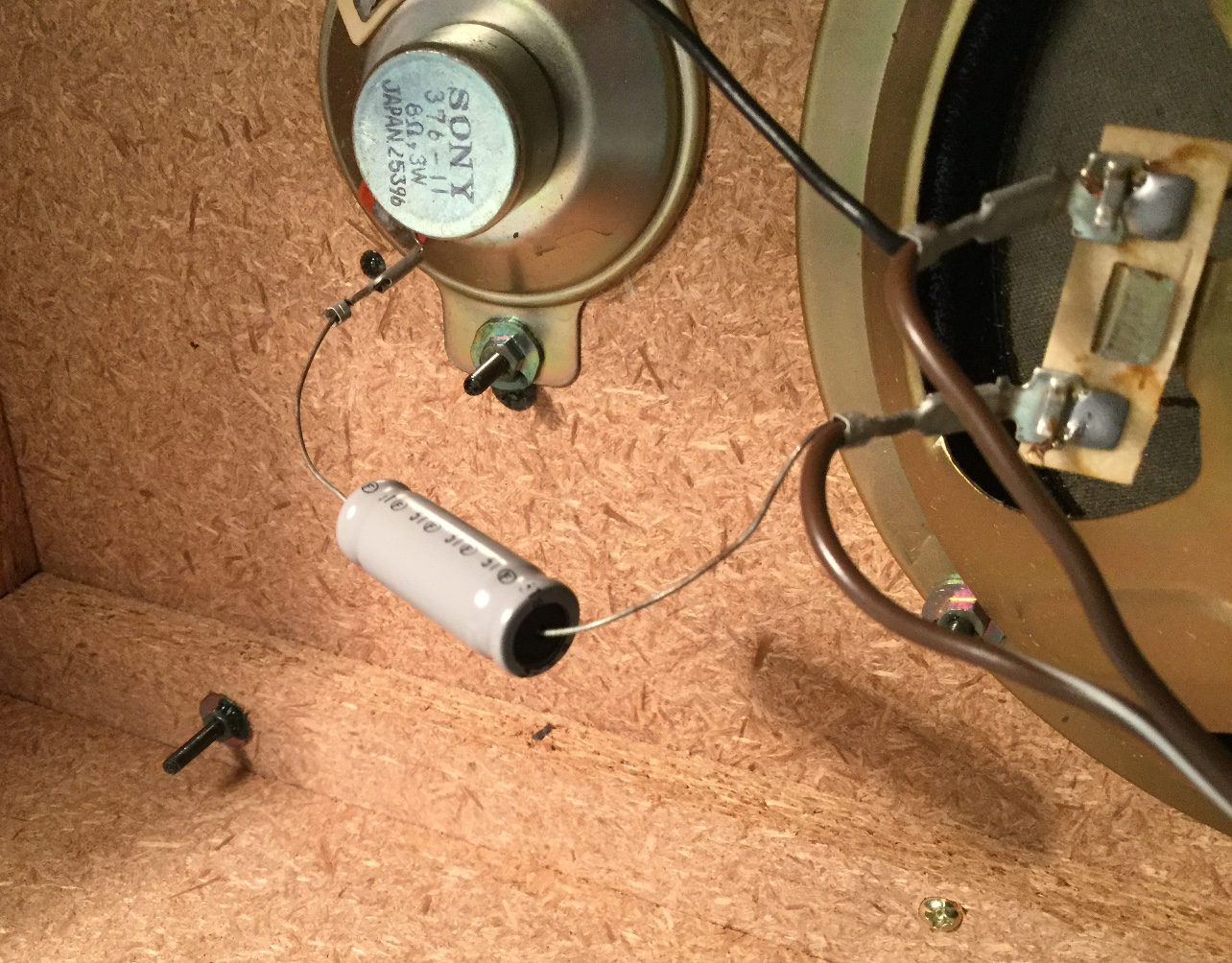
When I removed these capacitors and tested them, I found they had actual values of 2.52 and 2.57 micro-farads. Hmmm. Not really a big change there.
Nonetheless, I replaced them with new capacitors from Mouser Electronics: WMA film capacitors, rated 2.2 micro-farads and 50 Volts, +/- 10%. When I measured all six of the new capacitors (I only needed two, but spares are good), I found values of 2.18, 2.19, 2.21, 2.22, 2.24, 2.25 micro-farads. Good.
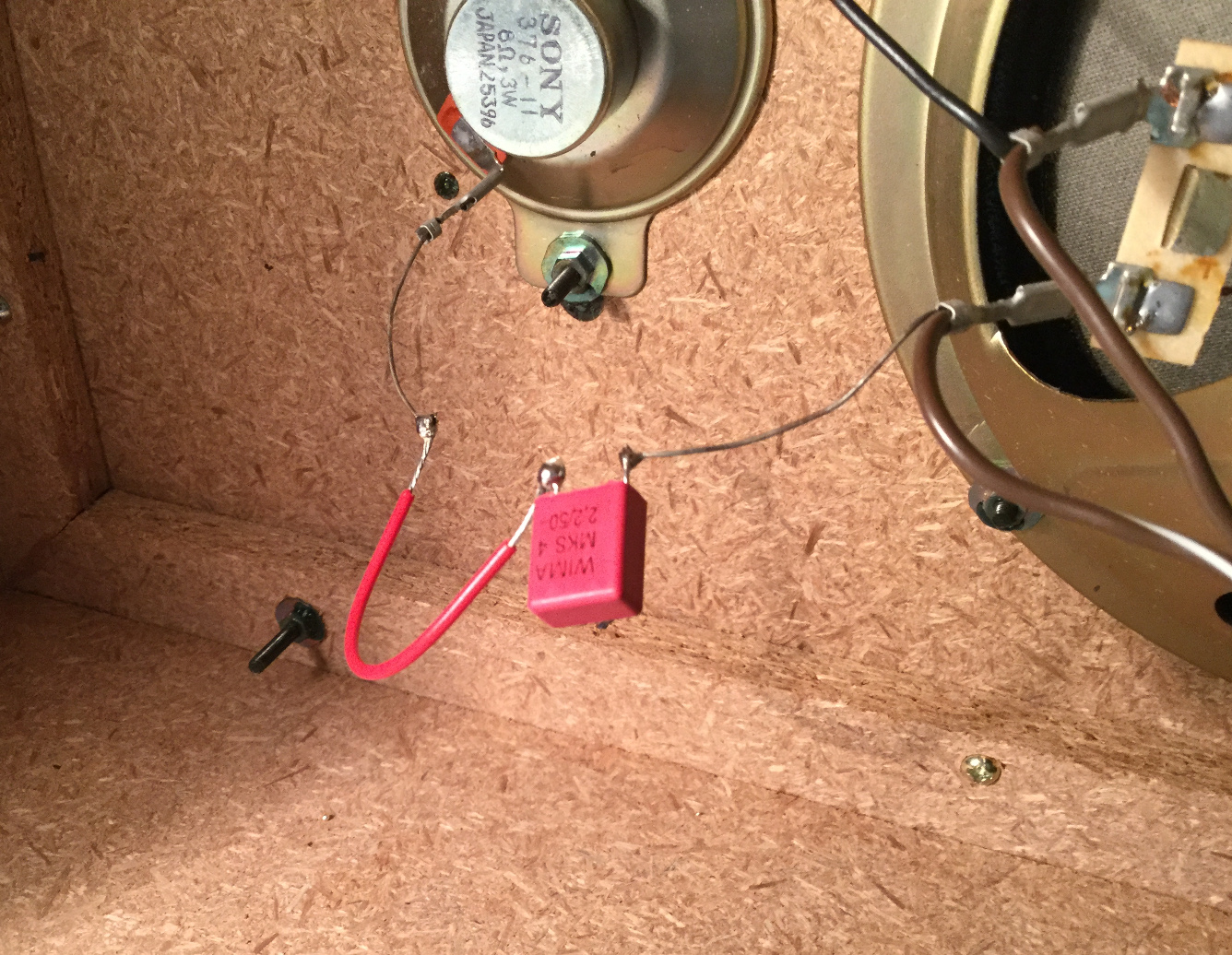
Did the new capacitors help?
As a baseline, before replacing the capacitors, I played music from the Nikko receiver through both the Sony SS-310 speakers, and a pair of Polk Audio monitors. There was a big difference. My notes read:
Polk is much nicer. Polk has more bass and cleaner high notes. Sony sounds muffled, as if sound coming from a box.
After replacing the capacitor in one of the Sony speakers, I compared it to the one with the old capacitor. I wrote:
not any significant difference :-(
Sigh. Well, I tried, at least.